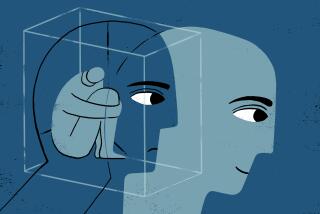The War on Poverty Must Continue : Other Benefits Rise, Yet Welfare for Poor Children Drops
- Share via
In his final State of the Union Address in January, President Reagan said, “Some years ago, the federal government declared war on poverty, and poverty won.”
It happens I was present in the Rose Garden at mid-morning of Aug. 20, 1964, on the occasion when President Lyndon B. Johnson signed the Economic Opportunity Act of 1964. At no point in his remarks that day did he use the term “war on poverty,” but that usage became common and President Reagan surely reflects a widespread judgment that as a nation we failed in that great undertaking.
About one American in six was poor in 1964; about one in six is poor today. This seemingly intractable proportion is the result of two quite opposite movements.
In 1964, poverty was essentially a problem of the aged. More than a quarter of the aged were poor. But programs enacted under Johnson and Richard M. Nixon greatly reduced poverty among the elderly to the point--still not an acceptable one--where 12.4% of those 65 and over live below poverty level. By contrast, all of a sudden we look up to find there are more poor Americans today than a quarter century ago, and that the poorest group in our population is children.
As we approach the end of the 20th Century, a child in America is almost twice as likely to be poor as an adult. This is a condition that has never before existed in our history. Most probably, it has never before existed in the history of the human species.
How has this come about? At one level the answer is simple. It is, as Samuel H. Preston, president of the Population Association of America put it, “the earthquake that shuddered through the American family in the past 20 years.”
As the census has just reported, in 1986, nearly 1 in every 4 children--23.5%--live with only one parent, 2.5 times the proportion in 1960. The vast majority--89%--of these 14.8 million children live with their mothers. Estimates of the number of children who will live with a single parent at some point during childhood are yet more striking. The Bureau of the Census predicts that 61% of children born in 1987 will live for some time with only one biological parent before they reach the age of 18. Inevitably, large numbers of these children require some form of public assistance.
Further, in providing such assistance, we have created an extraordinary institutional bias against minority children.
The Social Security Act has two provisions for the care of children in single-parent families. The first is Aid to Families with Dependent Children, enacted into law as part of the original 1935 Social Security Act. The second is Survivors Insurance, added to the act in 1939. The characteristics of the two populations served by these programs are quite different. The majority of the children receiving SI benefits are white. The majority of the children receiving AFDC are black or Latino. Since 1970 we have increased the real benefits received by children under SI by 53%. We have cut the benefits of AFDC children by 13%. The U.S. government, the American people, now provide a child receiving SI benefits almost three times what we provide a child on AFDC.
Those who say we don’t care about children in our country should note that since 1970s, the average provision for children under SI has been rising five times as fast as average family income. We do care about some children. Majority children. It is minority children--not only but mostly--who are left behind.
Why this institutional bias?
I believe we know why. Welfare has become a stigmatized program. Children dependent on it--as many as one child in three before reaching 18--are stigmatized as well.
The Family Security Act, our legislation that has 56 co-sponsors and is now under consideration by the Senate, is designed to get rid of that stigma by emphasizing the collection of court-ordered child support payments and the education and training adults need to get off welfare. There has been a great deal of talk about both, but the federal government has really never backed either. Once that stigma is gone, or diminished, states will once again feel the moral obligation to maintain and even increase AFDC payments to dependent children. They are free to do so now. They do not. We want to change this.
Let me declare my own conviction apart from the provisions of our bill: AFDC should be a national program with national benefits that keep pace with inflation, in exactly the same way that Survivors Insurance is a national program with national benefits. Had the Family Assistance Plan, which I helped fashion for President Nixon, been enacted, we would now have such a program. Had President Jimmy Carter’s Program for Better Jobs and Income, which I supported in the Senate, been enacted, we would have such a program. Both proposals fell before a coalition of those who thought the benefits were too great and those who thought them too little. But that is history. Today, our federal budget deficit is such that there is no possibility whatsoever of establishing national AFDC benefit standards.
We can have welfare reform this year. But welfare reform must become the art of the possible or it will become a diversion of the essentially unserious.
More to Read
Sign up for Essential California
The most important California stories and recommendations in your inbox every morning.
You may occasionally receive promotional content from the Los Angeles Times.










